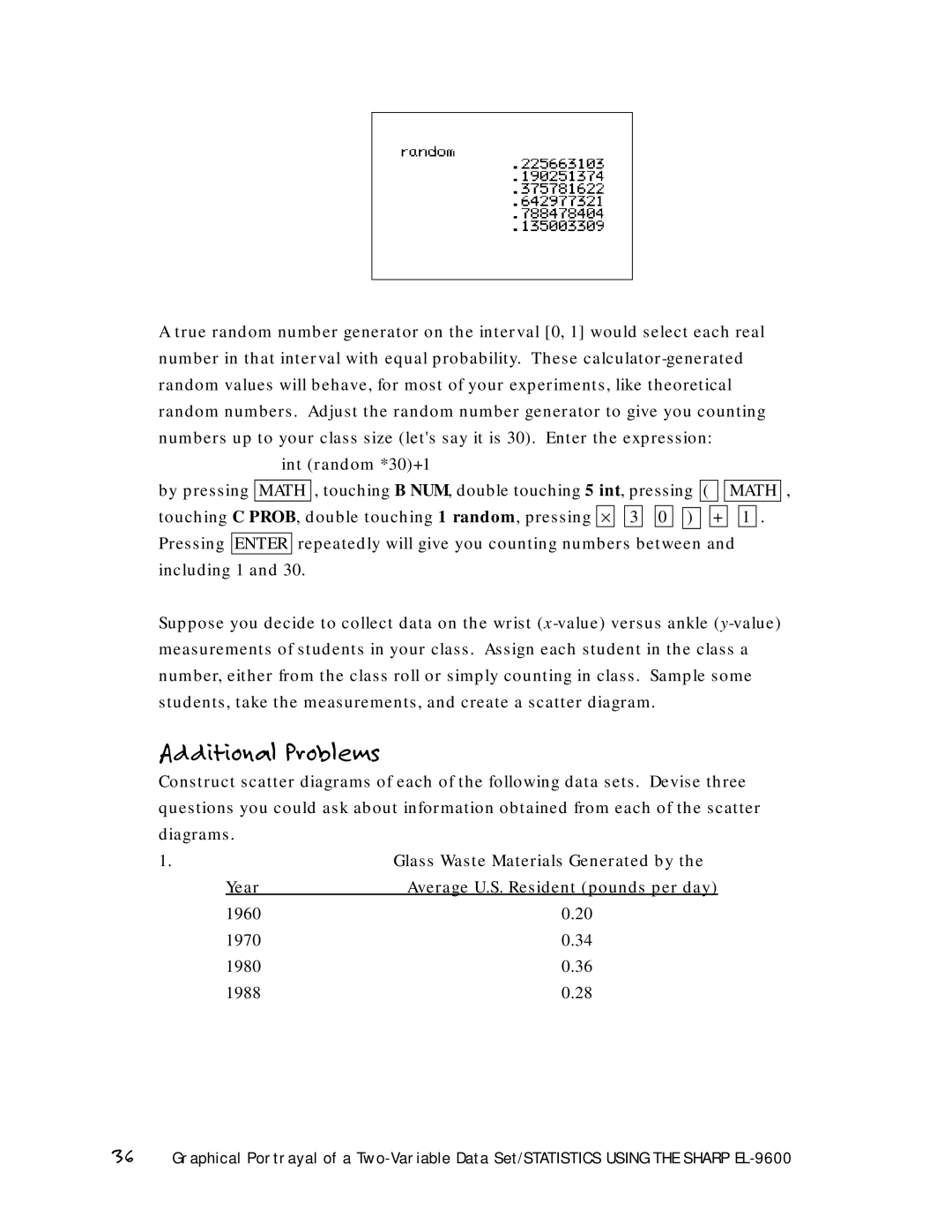
A true random number generator on the interval [0, 1] would select each real number in that interval with equal probability. These
int (random *30)+1
by pressing MATH , touching B NUM, double touching 5 int, pressing ( ![]()
![]() MATH , touching C PROB, double touching 1 random, pressing ⋅
MATH , touching C PROB, double touching 1 random, pressing ⋅ ![]()
![]() 3
3 ![]()
![]() 0
0 ![]()
![]() )
) ![]()
![]() +
+ ![]()
![]() 1 . Pressing ENTER repeatedly will give you counting numbers between and including 1 and 30.
1 . Pressing ENTER repeatedly will give you counting numbers between and including 1 and 30.
Suppose you decide to collect data on the wrist
Additional Problems
Construct scatter diagrams of each of the following data sets. Devise three questions you could ask about information obtained from each of the scatter diagrams.
1.
Year
1960
1970
1980
1988
36Graphical Portrayal of a
